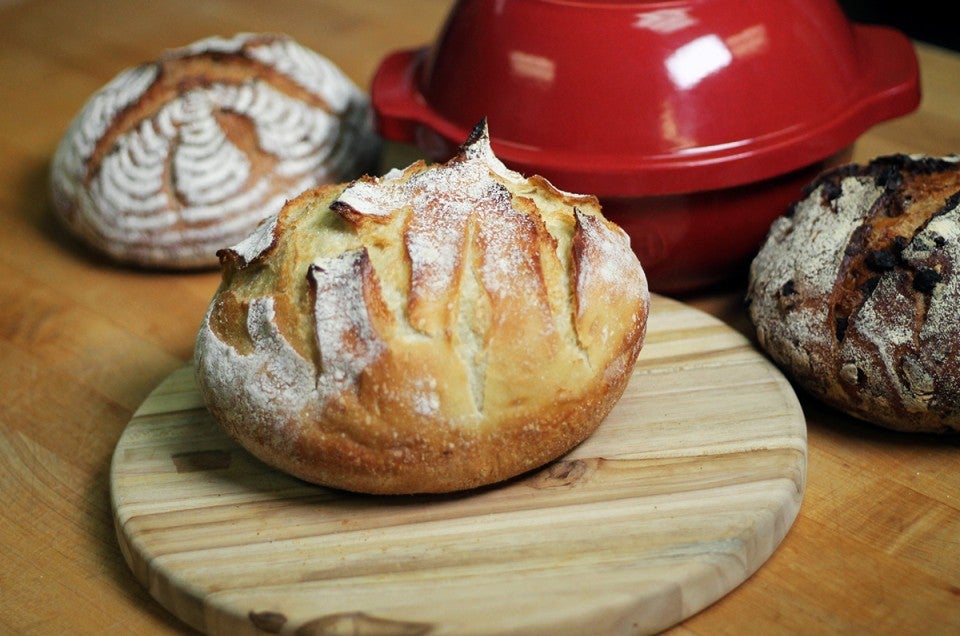


Making crispy, crusty, golden loaves of bread at home has never been easier. It all starts with bread baking in a Dutch oven (lidded pot), the perfect vessel for making artisan-style loaves. The steam that's created inside the pot miraculously transforms the dough, ensuring the bread's crust will shatter into delicate shards with each bite. The best way to produce steam inside a lidded pot? It's simple: preheat the pot.
Gently slipping risen yeast dough into a searing hot pot and adding the lid creates steam. In turn, this results in bread with a crackly crust and a glossy surface that's beautifully blistered with bubbles.
We’re no strangers to baking with steam, but our excitement about this classic method has been rekindled. The arrival of Emile Henry’s Bread and Potato Pot, a unique Dutch oven, has us eager to bake!
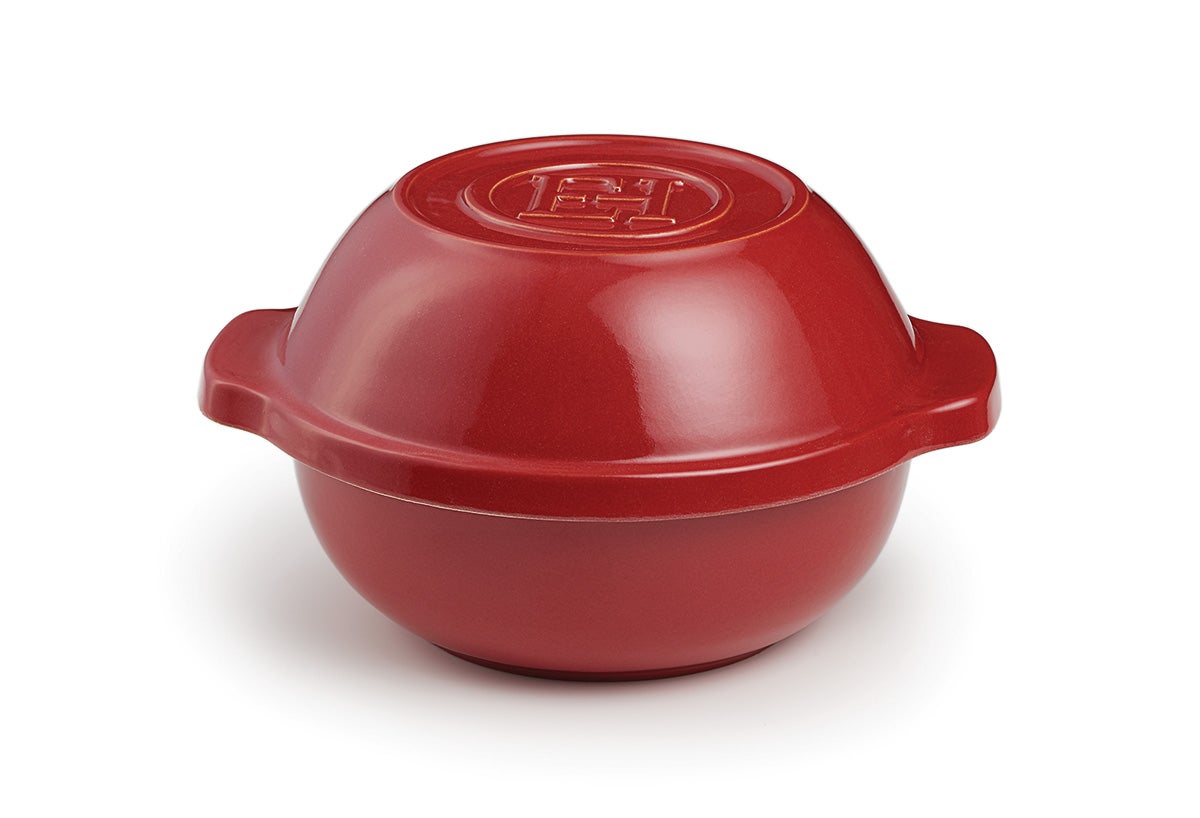 While this pot is often used in France to make perfectly cooked potatoes, it’s also a game-changer when it comes to bread baking in a Dutch oven. Some bread crocks can't withstand the intensity of being heated empty and are bound to crack when nothing's inside. However, this pot is part of Emile Henry's flame line, which is known for its durability and high-heat resistance.
While this pot is often used in France to make perfectly cooked potatoes, it’s also a game-changer when it comes to bread baking in a Dutch oven. Some bread crocks can't withstand the intensity of being heated empty and are bound to crack when nothing's inside. However, this pot is part of Emile Henry's flame line, which is known for its durability and high-heat resistance.
You'll see why we love bread baking in Dutch oven like this — the loaves that come out of it are just as beautiful as they are delicious.
When the Bread and Potato Pot is preheated empty, it becomes a miniaturized version of a professional steam-injected oven. The heat is distributed more evenly than in a conventional oven, and the steam transforms the dough in a few magical ways.
When unbaked dough, with all its interior moisture, is put inside the hot pot, precious humidity is captured in the form of steam. The steam keeps the crust soft longer, so it can continue to expand during the early stages of baking. The result is a lofty loaf that looks like it came from the bakery down the street!
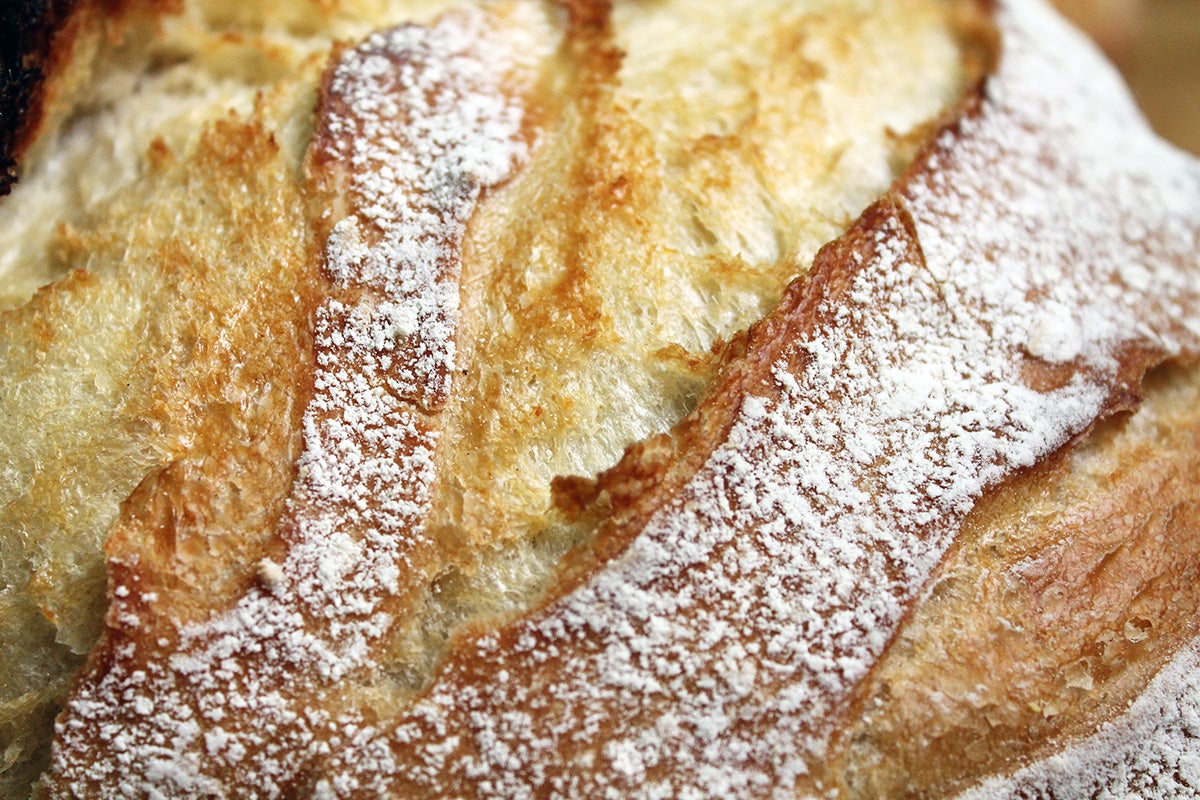
In addition, the steam hitting the bread's surface gelatinizes some of the starches there, which swell and become glossy, creating a crust with subtle, attractive luster.
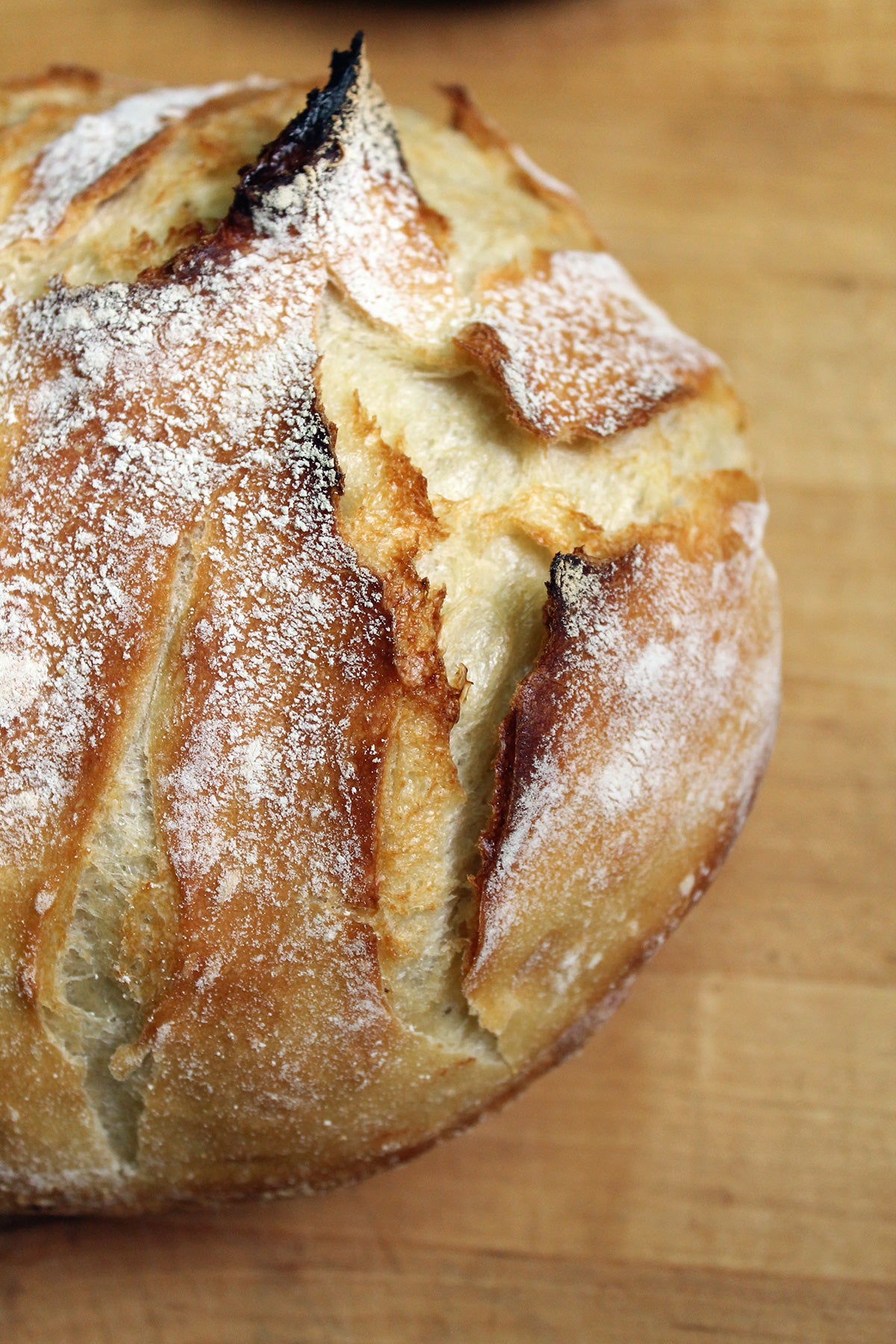
Also thanks to steam, any slashes or “scores” made in the risen dough open up beautifully during baking. They form “ears,” or crisp ridges that add crunch and an artisan-style look to your voluminous loaf.
Loaves baked with steam taste as good as they look, too.
Steam’s moisture keeps the surface of the dough cool for a longer amount of time as the loaf bakes, which allows enzymes (from the yeast) to continue reducing the starches in the flour to simple sugars.
“Simple sugars” might not sound delicious, but trust me — they are. These sugars caramelize and create the golden crust and irresistible flavor of a perfectly baked loaf of bread.
Intrigued? Let’s show you how it’s done!
First, choose your recipe. No-knead bread recipes are particularly well-suited to this method, as they’re typically wet doughs that release steam when they come in contact with the hot pot (plus they’re easy to make and delicious, too).
I used the quintessential No-Knead Crusty White Bread recipe to put this pot to the test, but you can use practically any bread recipe that makes at least two pounds of dough. (Look for recipes that call for at least four to five cups of flour.)
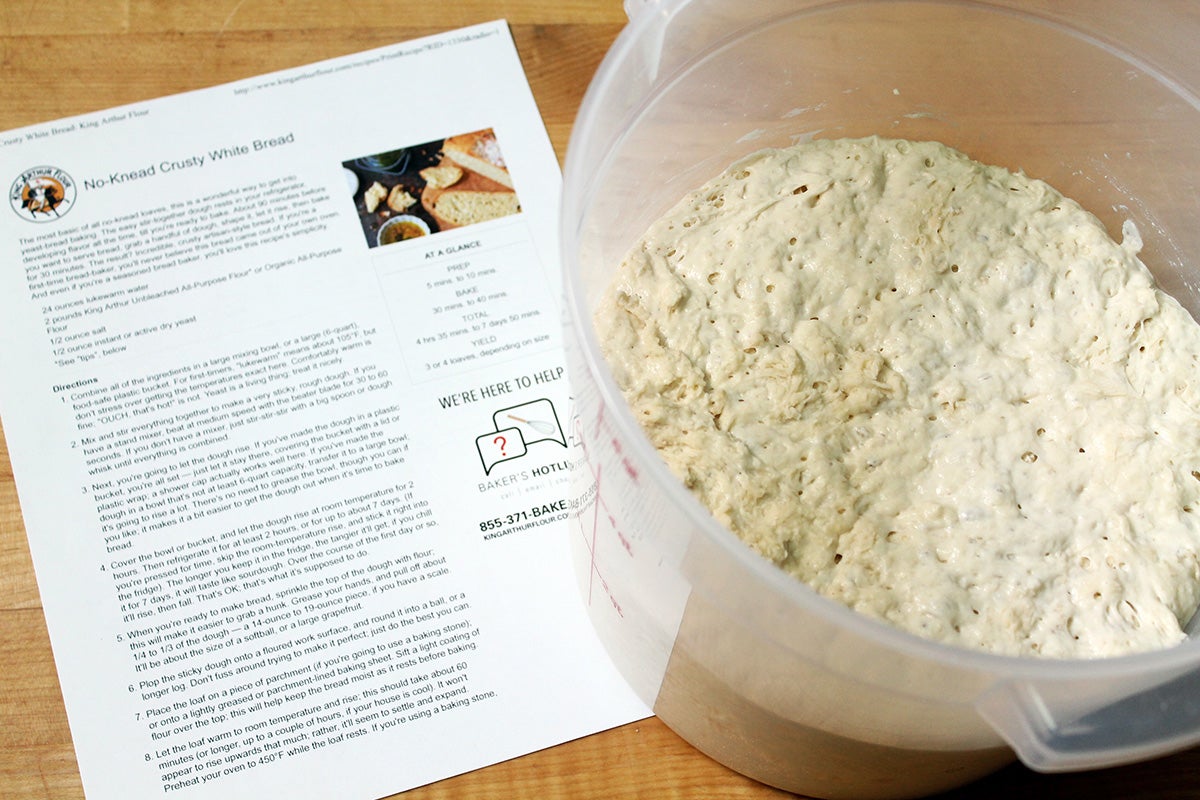
Prepare the recipe as written, which often includes a 24-hour (or longer) rest in the fridge for no-knead dough; be sure to plan ahead.
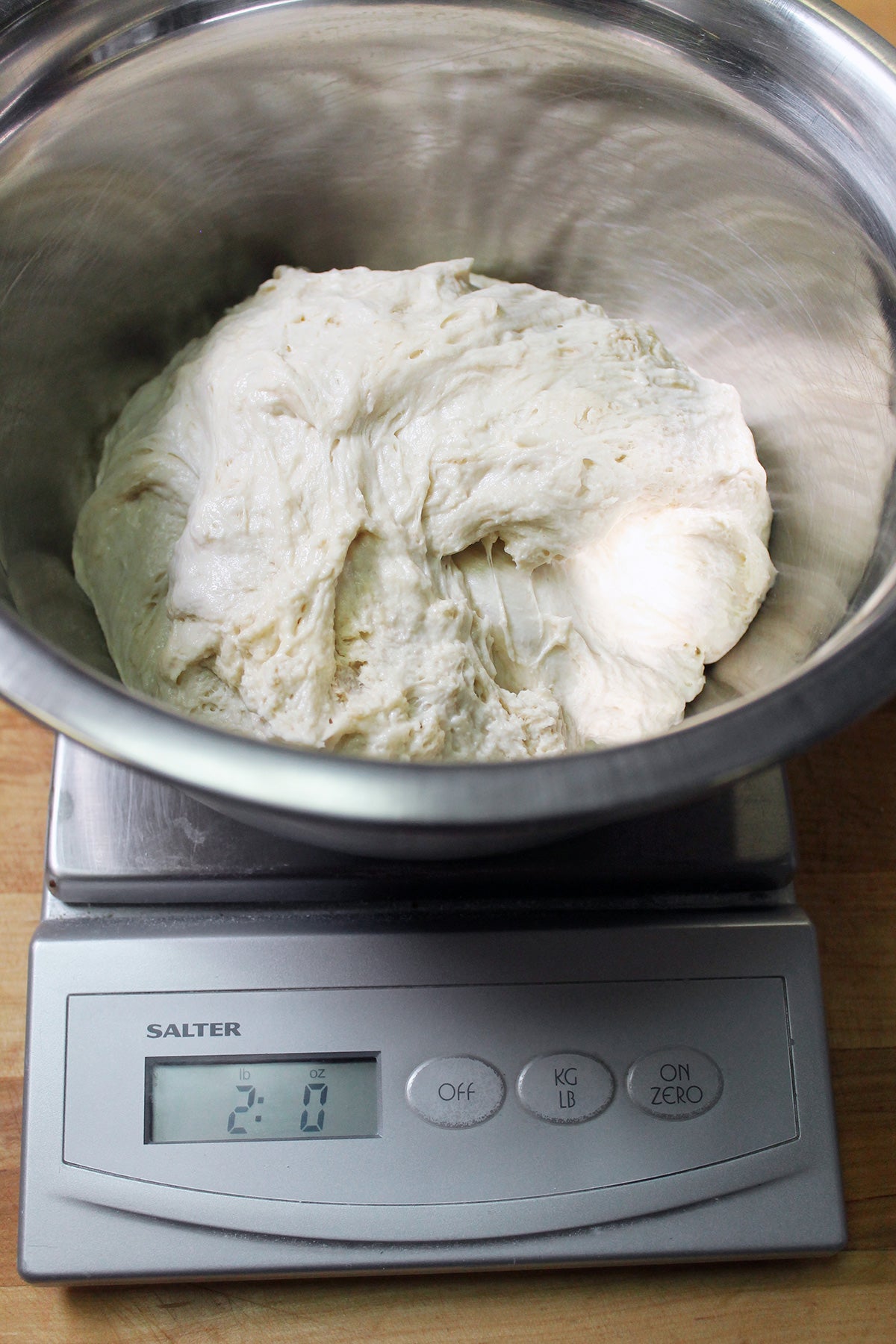
When you’re ready to bake, measure out a two-pound ball of dough. If you don’t have a scale, it should look like it will fill the base of the Bread and Potato Pot most of the way.
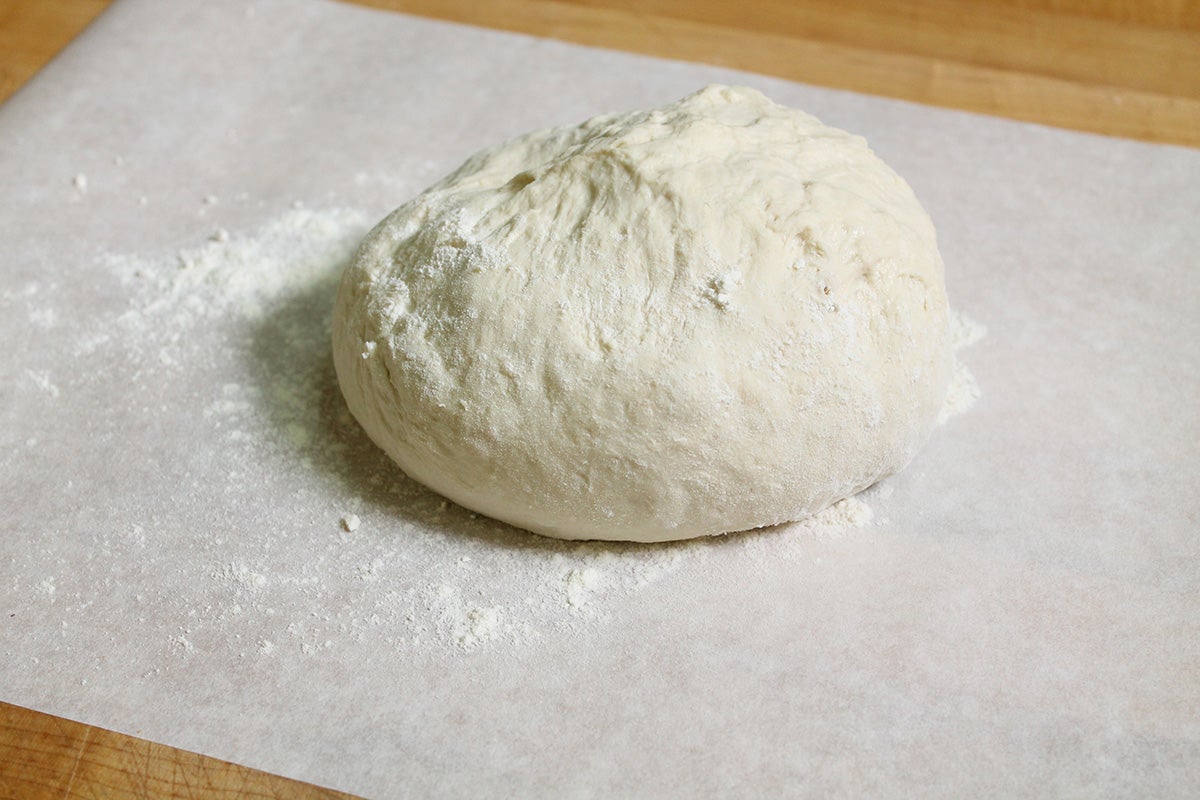
Shape the dough and let it rest on a floured kitchen towel or piece of parchment paper with the seam side up, covered, while it rises. (You can also use a brotform if you want to make some fancy rings on the surface of your loaf.)
To ensure you get a burst of steam when the dough is put inside the pot, it should be preheated empty for about 30 minutes. Start preheating your pot roughly 30 minutes before your rising dough is ready to bake.
Keep in mind the temperature of your kitchen will make a difference in how quickly the dough rises. The No-Knead Crusty White Bread dough can take anywhere from one to three hours to rise; in my cool Vermont kitchen, I usually let it rise for at least one hour before preheating the pot for 30 minutes, giving the dough a total of a 1 1/2 hours to rise.
When your dough looks like it will be ready in 30 minutes, put the Bread and Potato Pot (both the bottom and the lid) into the cold oven, and set it to 450°F (or the temperature your recipe calls for).
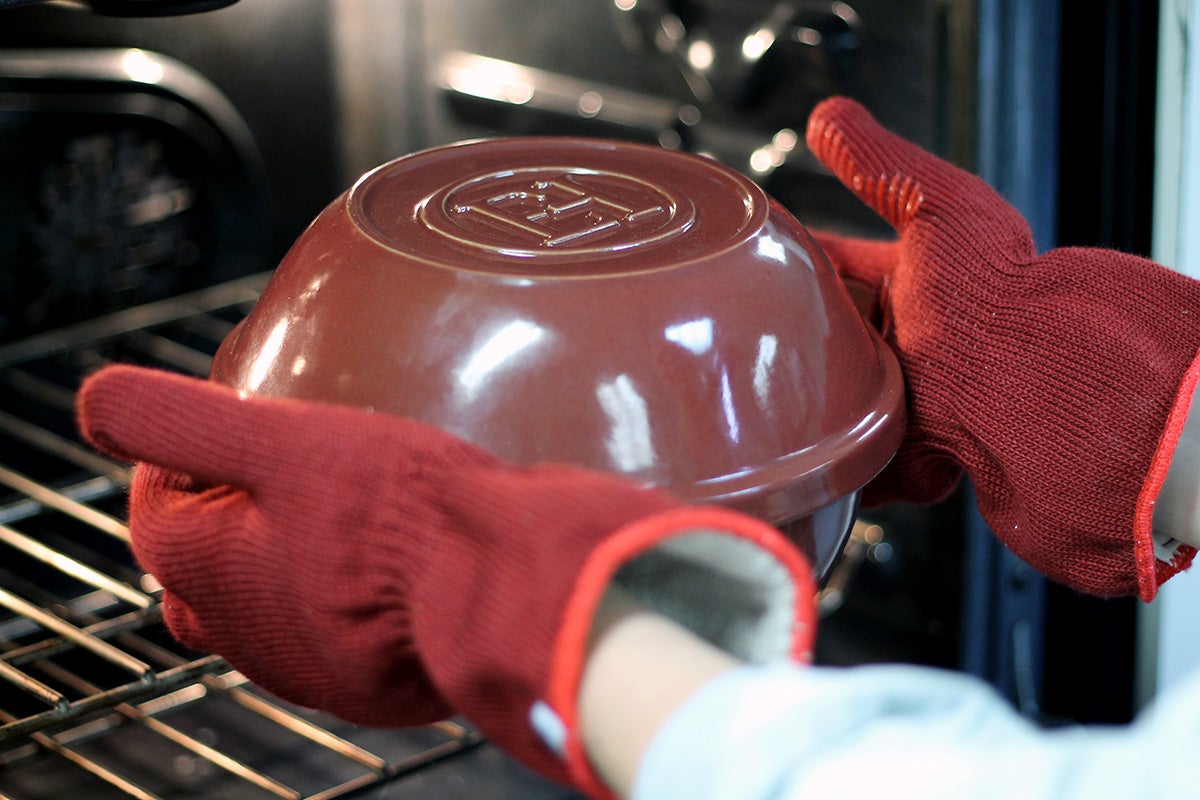
Half an hour later, the dough should be risen and the pot should be thoroughly preheated. Carefully remove the hot pot from the oven, taking care to place it on a neutral surface like a cooling rack, wooden board, or kitchen towel. (Avoid contact with anything cold, such as cold water or a cold surface; this may cause the pot to crack.)
Apply a gentle coating of vegetable oil-based non-stick spray and sprinkle in some semolina flour or cornmeal. (Be careful during this step — the pot may smoke slightly when prepared.)
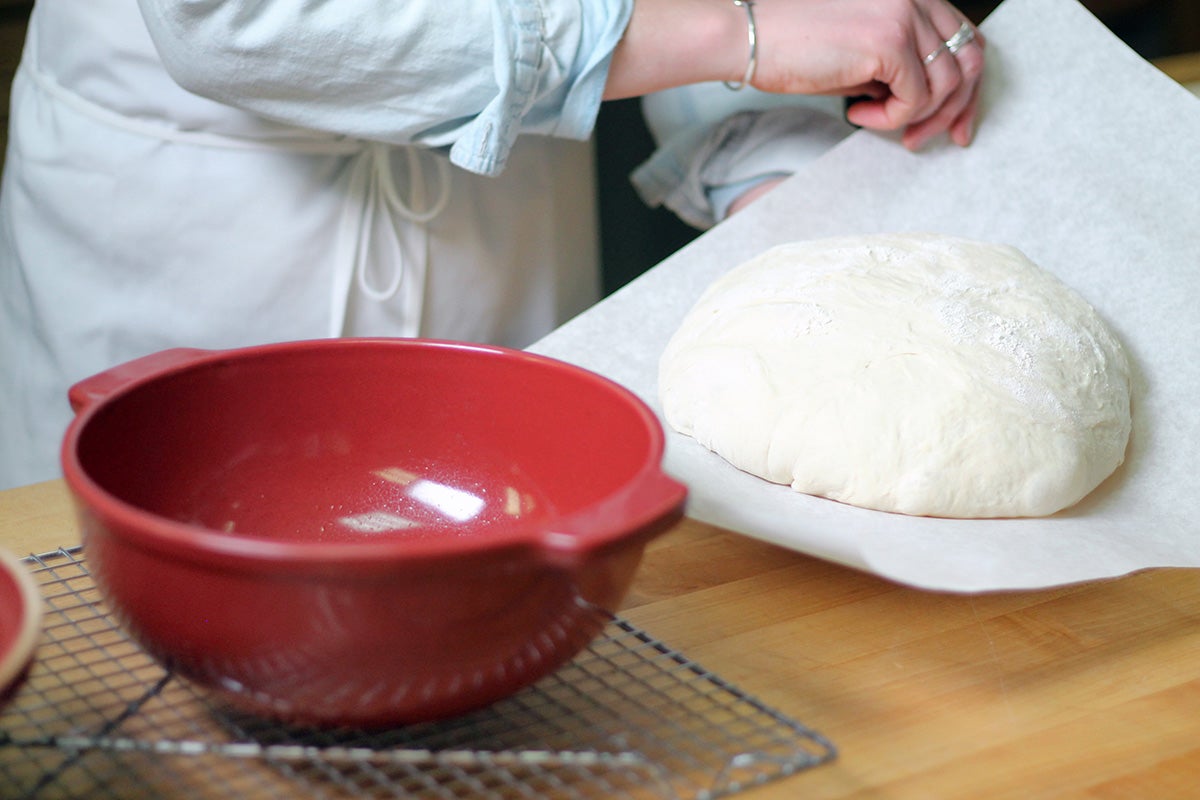
Slide your hand under the towel or piece of parchment paper and turn the dough over into the pot, seam side down. You can gently shake the pot from side to side to help the dough settle evenly in the bottom.
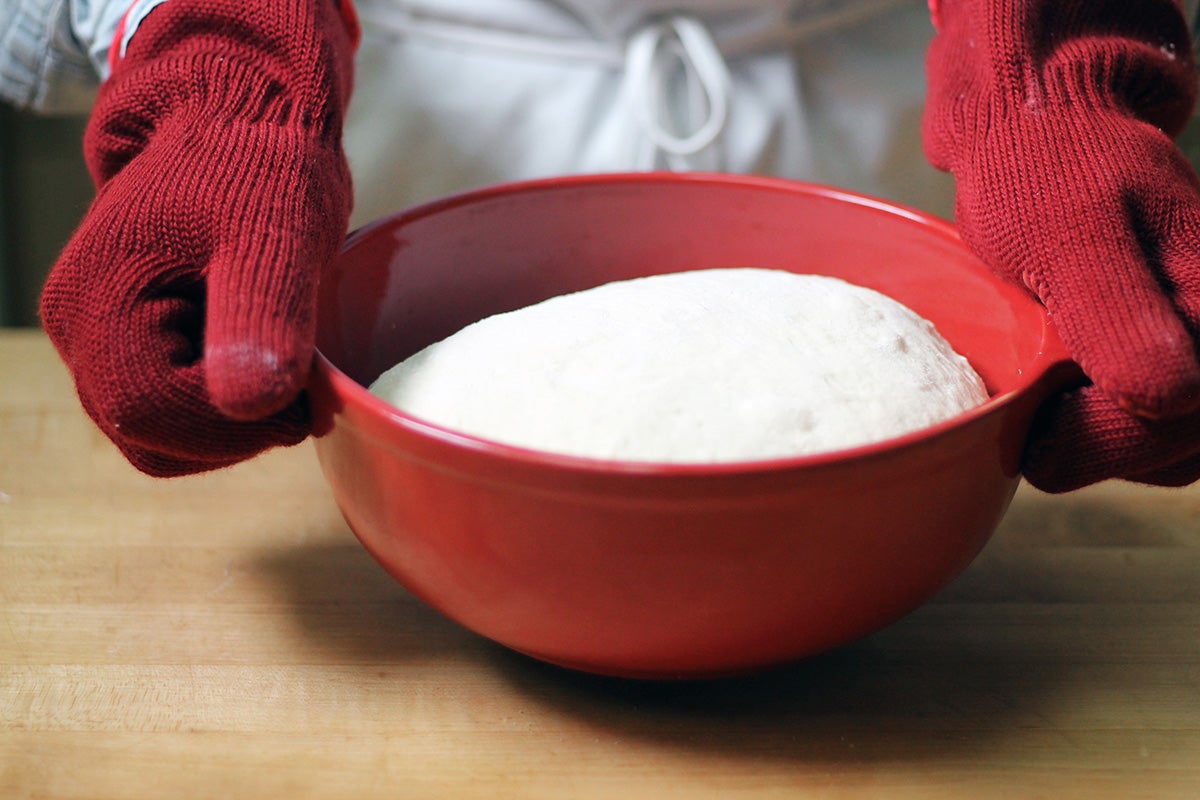
Don’t worry if your dough doesn’t look picture-perfect here; it will turn into a beautiful, golden loaf as it bakes.
Make a few slashes in the top of your loaf (a lame works well for this), and then put the lid on. Bake for 25 to 30 minutes; remove the lid and bake for another 5 to 10 minutes, until the loaf browns fully.
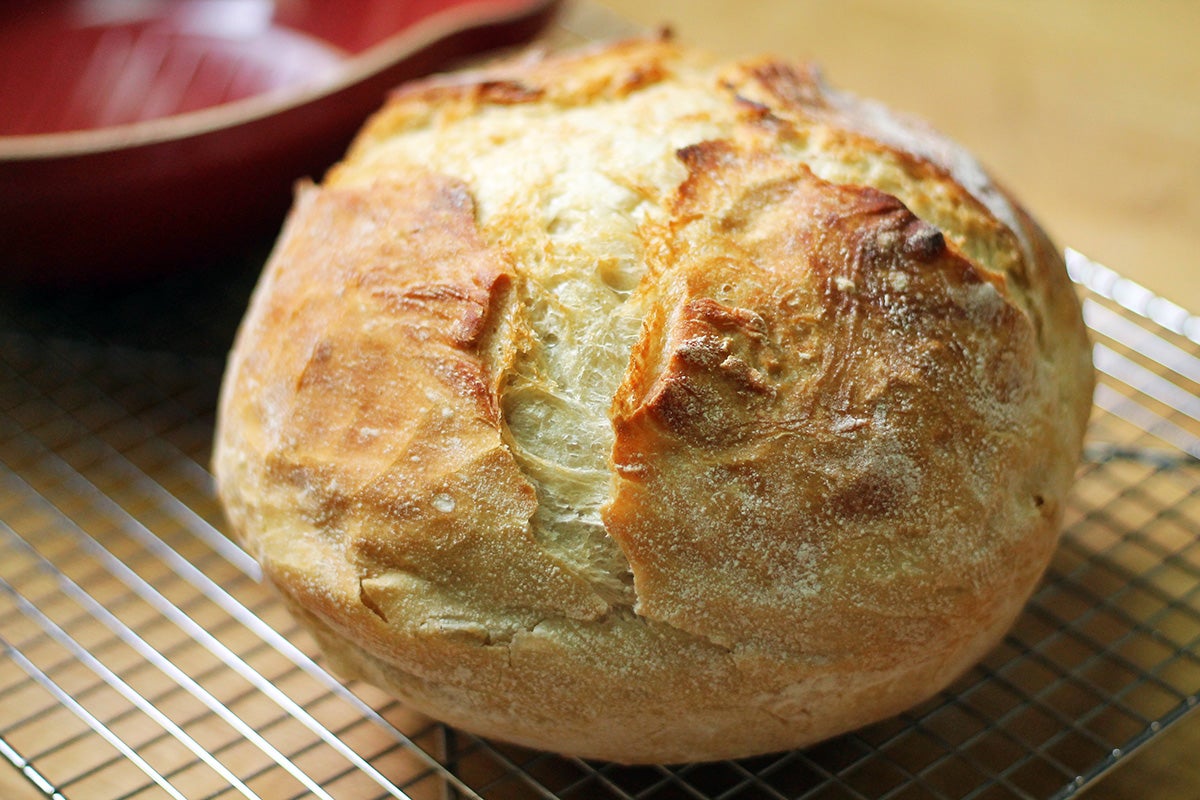
Remove the loaf from the oven and let it cool completely on a rack before slicing.
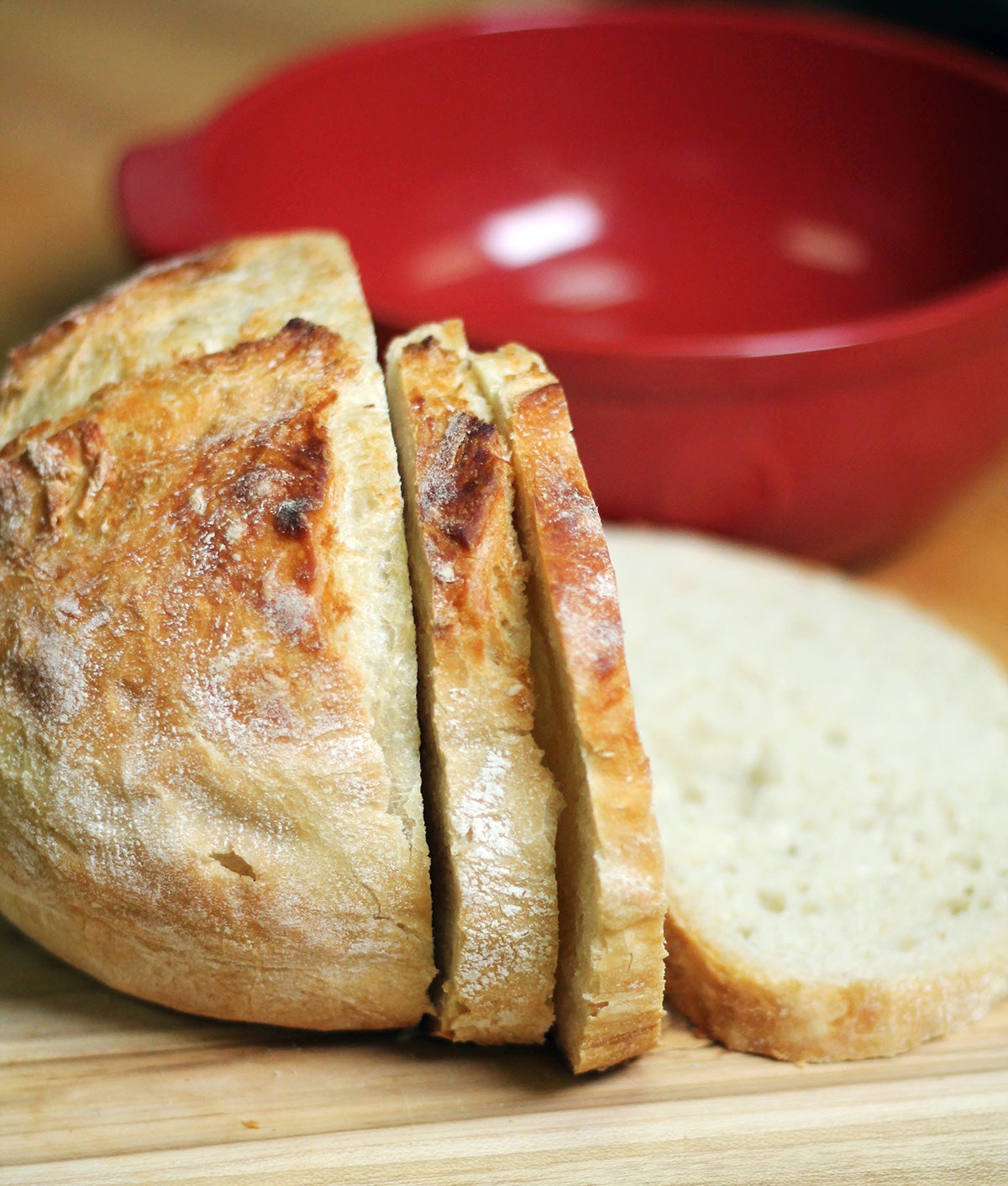
Beautiful crust? Check. Open crumb? Check. Yeasty flavor? Check.
I was stunned by the impressive looking loaf I pulled out of the oven the first time I used this method. I yelped with joy and declared it the best-looking loaf I had ever made! But then I wanted to find out, was it really the wonders of preheating the Bread and Potato Pot — or just this much-loved, no-knead recipe?
To see if there was any difference, I baked a second loaf (same recipe, same amount of dough, same length of time in the fridge) but baked it on a baking sheet instead of in the Bread and Potato Pot.
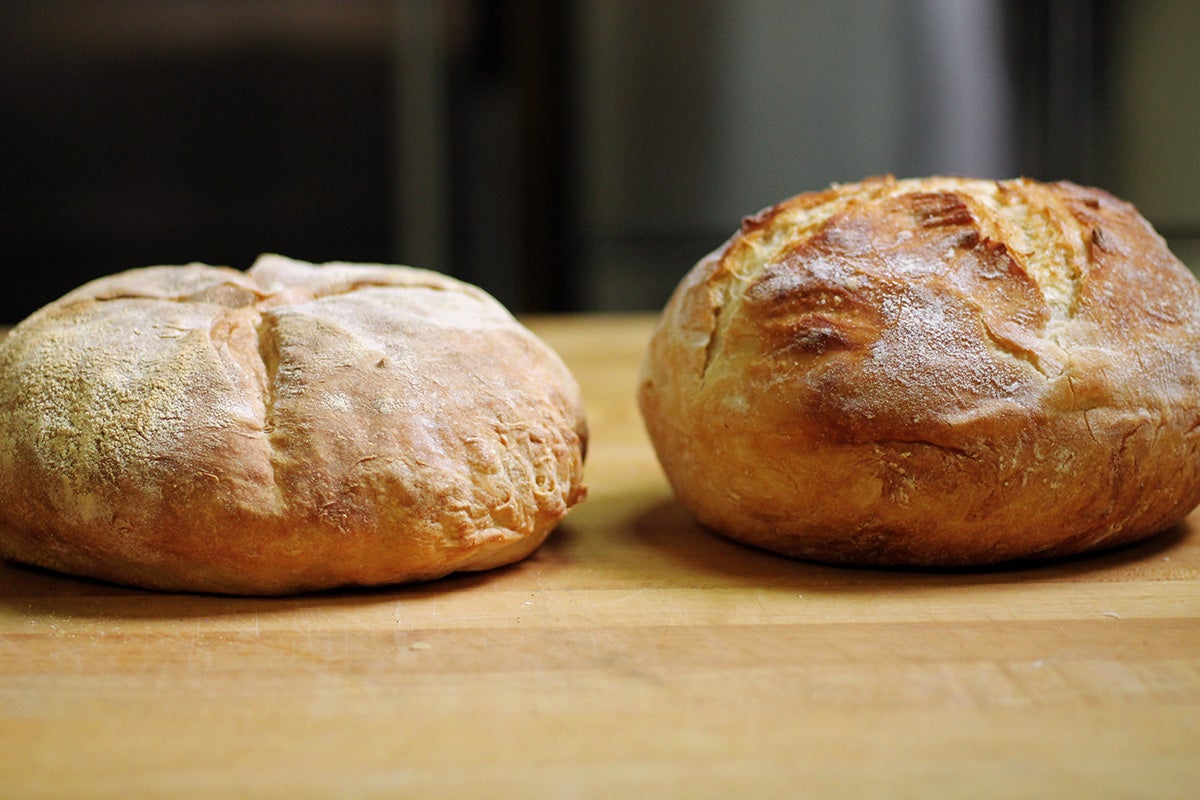
The side-by-side comparison shows that bread baking in a Dutch oven (and preheating it first) is the key to making an artisan-looking loaf. More steam is created inside the preheated Bread and Potato Pot than when water is poured into a pan in the bottom of the oven, one trick for making crusty bread. Plus, regular ovens vent, so it’s difficult to maintain a moist environment if you don't use a covered baker.
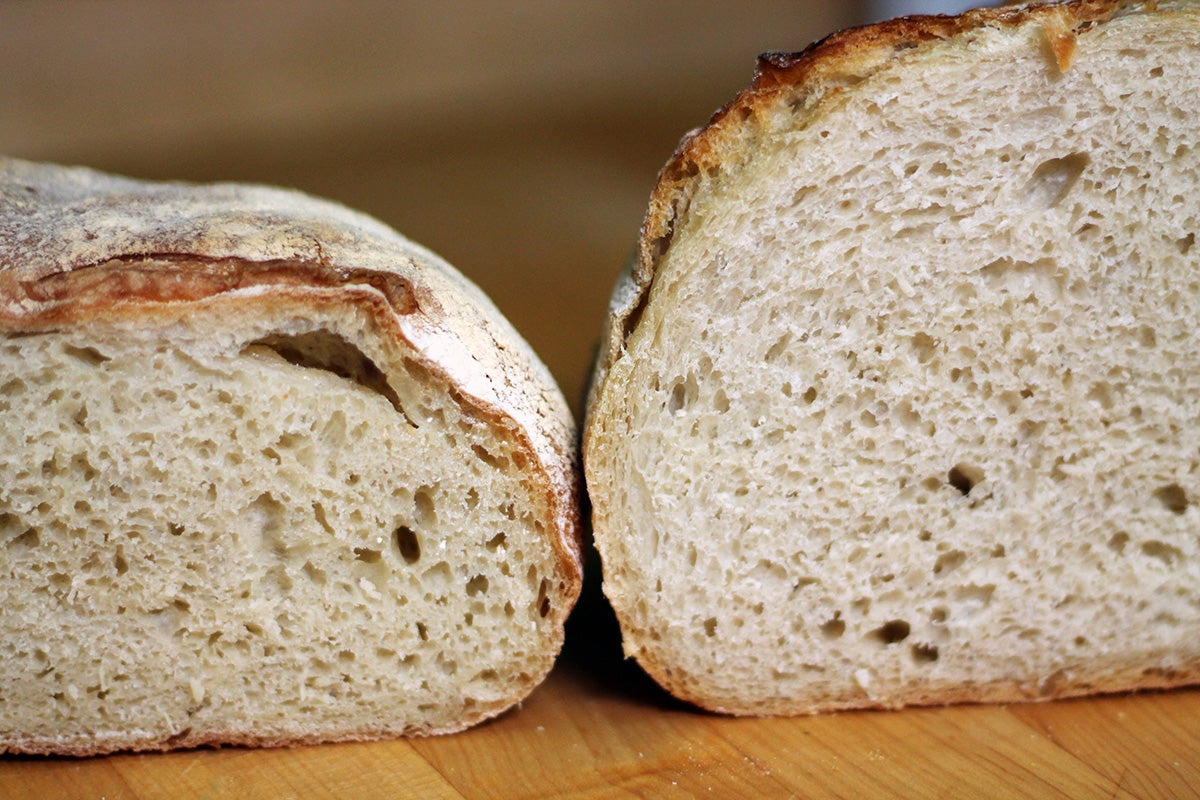
While the crumb was similar, the height difference and crust color of the bread baked in the Bread and Potato Pot made it a more appealing loaf.
A preheated Dutch oven captures a burst of steam, resulting in a perfectly baked loaf.
While the Bread and Potato Pot is perfectly suited to this preheating method, other pots in your repertoire may be able to produce similar results.
You can try using a 4- to 5-quart heavy covered pot, like a cast iron Dutch oven. Some Pyrex and ceramic Dutch ovens might also stand up to the task, but you’ll want to check the manufacturer's recommendation about preheating empty before giving it a try.
The wonders of this pot aren’t limited to No-Knead Crusty White Bread — you can try one of the delicious variations of this recipe if you’re looking to make bread that’s a little more exciting.
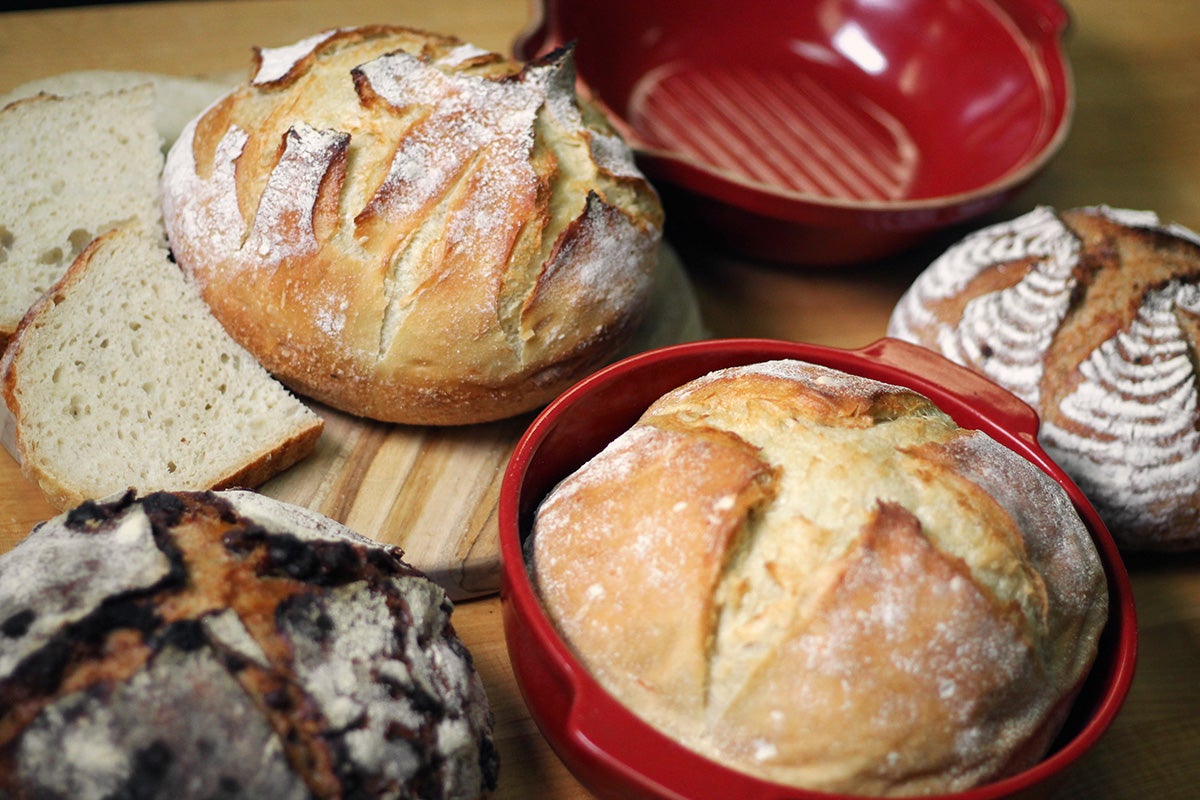
No-Knead Harvest Bread, No-Knead Crusty Whole Wheat Bread, and No-Knead Chocolate-Cherry Pecan Bread are also great choices when it comes to bread baking in your Dutch oven: the possibilities are endless when you use this simple preheating tip.
There’s so much to love about the Bread and Potato Pot — it can turn anyone into a bread baker. If you give this method a try, you'll say goodbye to store-bought bread in no time.
Share your experiences and best tips for bread baking in a Dutch oven in the comments, below.
Thanks to fellow employee-owner Seann Cram for taking the photos for this blog.
March 20, 2022 at 4:20pm
In reply to When I bake a loaf in the… by Carol (not verified)
Hi Carol, it's possible your oven is running hot, so you might want to try reducing the baking temperature by 25 degrees. You might also want to try baking more towards the middle of the oven, if you have your Dutch oven located closer to the bottom. The crust is also likely to get thicker and tougher if you leave the lid on throughout the bake, so be sure to remove the lid about halfway through the bake.
April 19, 2022 at 3:17pm
In reply to When I bake a loaf in the… by Carol (not verified)
Put the Dutch oven on a rack in the middle of the oven and put a cookie sheet/baking pan on another rack placed as low in the oven as you can. This will help deflect some heat from the bottom of the Dutch Oven pot...
March 5, 2022 at 6:26am
I have recently purchased the Emile Henry Artisan Bread Baker for baking sourdough. I didn't realise until I received it that it has quite big gaps where the handles are. They say it's specially designed for sourdough baking but will this work as well as a dutch oven that is fully sealed?
March 5, 2022 at 4:56pm
In reply to I have recently purchased… by Alix Gibson (not verified)
Yes, this pot should still do a great job with our sourdough baking, Alix!
February 24, 2022 at 2:00pm
I don't have a dutch oven but could I use a 5qt. Stainless steel pot (with flat lid)? Would I use the full amount of dough from the no-knead recipe or just half the dough?
February 25, 2022 at 1:58pm
In reply to I don't have a dutch oven… by Kate H. (not verified)
Hi Kate, if your stainless steel pot is suitable for baking at high temperatures (at least 450F), then you could probably use it for baking this recipe, but check with the manufacturer to be sure about safe using practices: for example, is the lid suitable for baking? Is this a pot that you can preheat empty? If the manufacturer doesn't recommend preheating empty, check out this blog post for some other baking options. I would guess stainless steel may be a little more prone to sticking, so I would recommend using sprayed parchment paper in the pot to help prevent your loaves from sticking to the pot. A 5-quart Dutch oven typically holds up to 2-3 lbs (907-1360g) of dough, but because of your flat lid, I wouldn't go higher than 2.5 lbs (1134g). This entire recipe makes 1612g of dough, so you could make a loaf that used up to about 2/3rds of the dough.
February 22, 2022 at 12:01am
I love making my bread in a Dutch oven, turns out perfect every time. My question is how should I be storing my baked bread? I put it in a plastic bread bag but after about 4 days it will start to mold. Help please
February 23, 2022 at 2:04pm
In reply to I love making my bread in a… by Diane (not verified)
Hi Diane!
There are several ways to store fresh bread, but ultimately it's always best to eat or freeze freshly baked bread within 2-3 days of baking so that it doesn't get stale or begin to mold. If your bread is crusty and you'd like to keep it crusty, you can just store it cut side down on the counter top. If you have a softer bread, it's best to keep it in a Ziploc bag or a sealed container at room temperature. We do not recommend storing fresh bread in the refrigerator.
If you'd like to keep your bread for longer than 2-3 days, freezing is the way to go. The key to freezing baked breads, rolls, and yeasted coffeecakes is to make sure they have completely cooled before you bag them up. You can slice breads and coffeecakes before freezing if you’d like. We suggest double-bagging hard-crusted breads to protect against the sharp edges causing little tears in the plastic, which can cause freezer burn. The items will keep for 3 months in the freezer, but after a month the flavors can begin to dull.
If you wish to serve the items cold, thaw them at room temperature in their freezer wrapping so they can reabsorb any moisture that may cling to the inside of their bags. If you wish to serve the items hot, put them (un-wrapped) into a 400°F oven for 20 minutes; this hot-thawing method makes the items stale faster, so eat at once. You don’t need to thaw individual slices of bread for toast, they can go right from the freezer to the toaster.
Happy baking!
August 26, 2022 at 9:46am
In reply to I love making my bread in a… by Diane (not verified)
All you can do is cut of enough of the loaf for 2-3 days and slice/freeze the remainder. Homemade bread left out will either mold or go stale.
February 21, 2022 at 6:40am
Hello!
Kye Ameden
I like & enjoy your articles on the Bread baking in a Dutch oven.
It is a wonderful article! You provide lot of resources, I like it.
I have a similar content https://kitchendecalidad.com/best-dutch-ovens-for-bread/.
If you have time, you can check it out. Hope for the best.
May God bless!
Manik
Pagination